
The art and science of engineering with living things
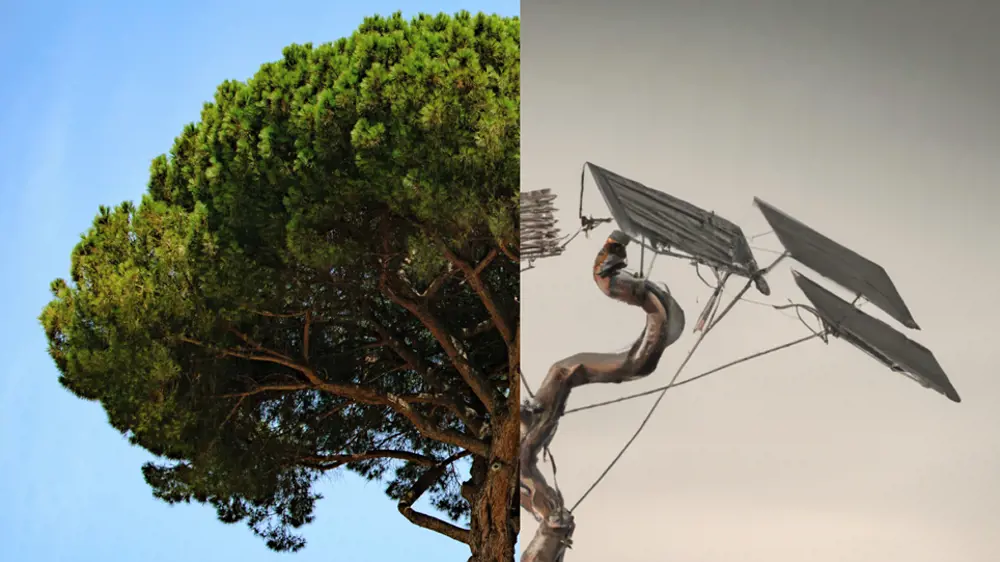
A visualization of the engineered tree thought experiment. Image created by Chris Bellamy using AI
When I was growing up, I had no idea what I wanted to be.
I loved making things and solving problems, so with the encouragement of my teachers, studied engineering at the University of Cambridge.
I was lucky enough to go on to work for global brands such as Jaguar Land Rover and Salomon, working to create more sustainable products. Whether it was electric cars or recyclable shoes, we were using cutting-edge engineering to try and reduce the impact of these products.
Then one day, a tree completely changed the direction of my career.
I wondered what the tree would look like if I tried to design one. It would have solar panels for leaves, pumps to power the water from the roots to the branches, and complex beams and trusses to support the weight of all of this.
I realised that with the metals and plastics I knew how to work with, I could never create something as elegant, efficient, ingenious or sustainable as the humble tree.
What if we could have more living things in our day to day lives? What if everyday objects could adapt, react, and repair themselves? What if our world could be engineered as elegantly as a tree?

Rangthylliang 1 root bridge is a living root bridge over 50 metres long in northeast India’s Cherrapunji region, Meghalaya. It is thought to be the longest living root bridge. © Anselmrogers
So, I decided to study biology, and to try and understand how nature achieved such remarkable things.
My studies highlighted that living things had in fact been used by humans for thousands of years. From bridges made from tree roots in Asia to the humble hedgerow – they can make useful structures. From probiotic yoghurt to doctors using maggots to clean wounds – they can improve our health and even save lives.
What I find most fascinating about living materials is their ability to adapt, react, and repair themselves. Today we only know about a tiny proportion of all living things and the rest is “biological dark matter”. From tiny bacteria to creatures in the deep oceans, there are still so many secrets in our natural world. Imagine what remarkable solutions we could achieve if we knew about all the unknown living things on our planet?
Yet solutions developed in our modern lives are inanimate. When I look around my office, I am surrounded by plastics and metals and other dead material such as the wood that my desk is made from.
What if we could have more living things in our day to day lives? What if everyday objects could adapt, react, and repair themselves? What if our world could be engineered as elegantly as a tree?
These very questions have inspired me over the last two years, which is why I became a “biodesigner”. I now make things from living things. And have grown chairs from trees, bandages from bacteria, and even created a fabric which lights up in the dark like a firefly.
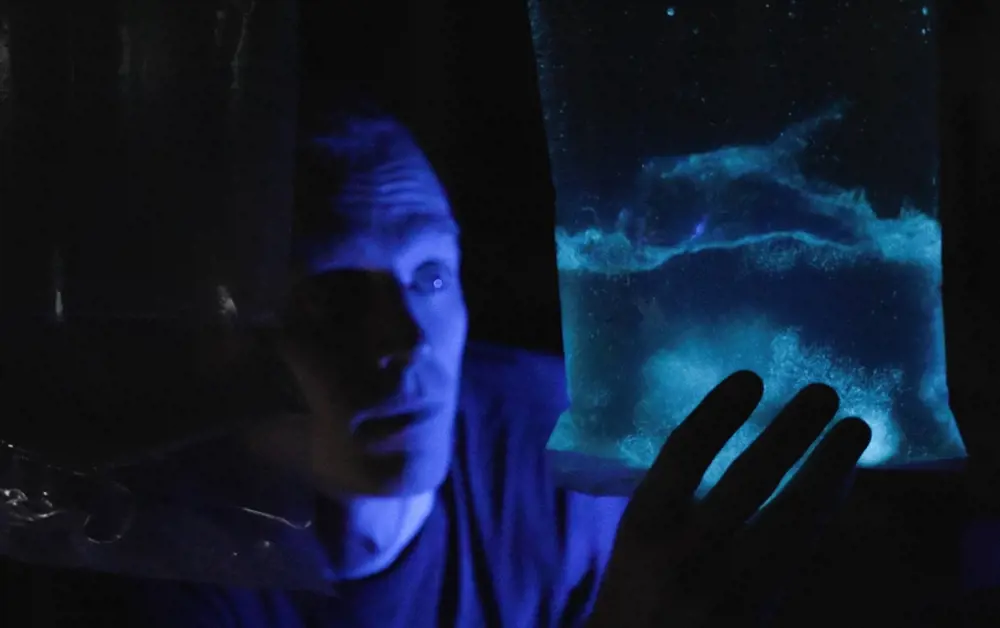
Chris growing bioluminescent micro-algae in the laboratory. They illuminate in response to movement. © Christopher Bellamy
These materials are known as “engineered living materials” – and you will be seeing a lot more of them in the future.
The challenge in working with living materials is that they can be expensive. They have to be fed and watered. They need to exist in optimal environments to function well. Some living things even have a circadian rhythm and need to sleep for 8 hours a night. Working with living materials is a lot like working with humans.
In working with living things, I have learned that to be a great engineer, we must use our creative skills, as well as logic and reason. Engineers are known for using rational thinking, and scientific processes. However, an artist understands the feelings and emotions of living things and can understand how to meet the emotional needs of the user, or in some cases, influence them. If engineers employ this deeper understanding of nature, they will be better engineers.
What interests me most right now, is how we can design with different species.
Last year I created a range of chairs made from living willow trees. As people sit in the living chairs, they adapt and change in response to the stresses and loads put on them. It is fascinating to see how people behave differently with an object when they know it is alive. It will be fascinating to see how the chairs adapt to the humans sitting in them over time.
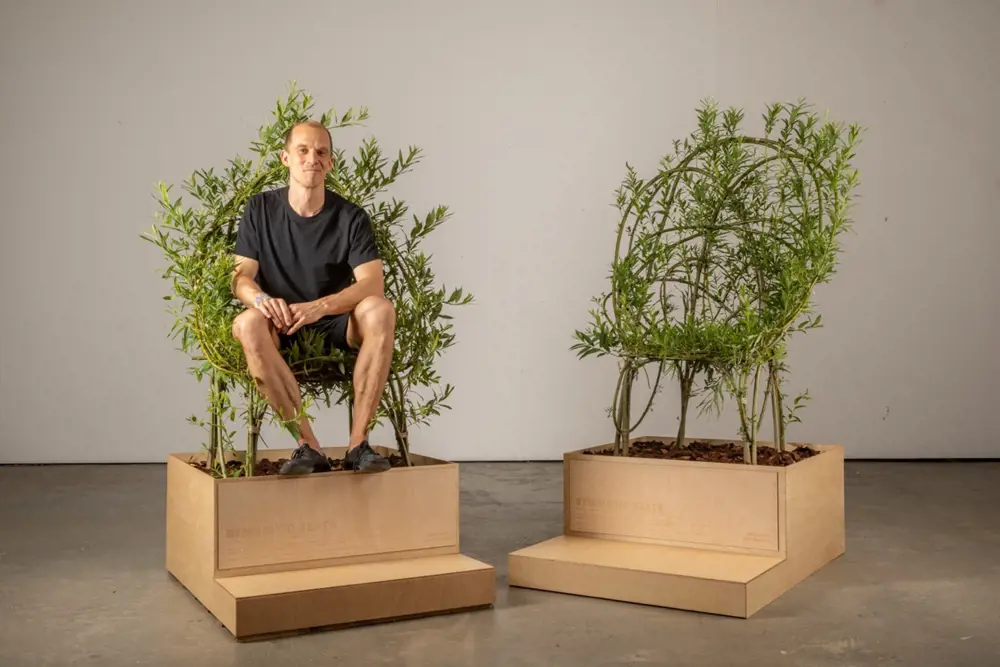
Chris sitting on one of his living willow chairs created for his “Symbiotic Seats” project © Christopher Bellamy

The fabric containing the bioluminescent micro-algae 'breathing' © Christopher Bellamy
My most recent work with indigenous artisans on the islands of French Polynesia was inspired by the symbiotic relationship between corals, and micro-algae.
Corals provide a safe space for the micro-algae to live, and in return, the micro-algae capture sunlight and turn it into energy for the coral through photosynthesis. I have tried to replicate this relationship, by making a fabric which is a home for bioluminescent micro-algae.
They will live there happily in this special fabric for months on end, so long as the human wearing the fabric gives them the sunlight which they need. In return for caring for the algae, the human wearing the fabric gets to see the micro-algae illuminate when touched, a beautiful and inspiring effect, which feels very connected to nature.

A bioluminescent fabric illuminates when touched thanks to the microalgae encapsulated inside © Christopher Bellamy
While I use science and engineering to make all of these designs possible – it is the emotional connections between humans and other species which I find the most interesting and challenging.
The UN climate goals state that we must halve our global emissions by 2030. A rational approach might be to make the product with half as much material. An emotional approach might be to persuade the user to use it for twice as long, adapt, repair or re-purpose, as does nature.
These ambitious but essential climate goals are only possible if we explore both the emotional and the rational – and perhaps consider solutions offered by billions of years of evolution in nature.

Chris collaborating with artisans Tekoui ‘Jérémie’ Tamari and Naumi ‘Mamie’ Tapi in French Polynesia © Christopher Bellamy
Contributors
Chris is a biodesigner and engineer who studied engineering at the University of Cambridge. He then started his career at Jaguar Land Rover, helping to develop their first electric vehicle, the Jaguar I-Pace. He then stepped into the footwear and apparel industry, developing customisable and recyclable shoes, in the hope of reducing the impact of the 20+ billion pairs of shoes made each year.
After realising the incremental improvements to plastics and metals would never be sufficient to meet climate targets, Chris has changed his career to work with living things, as he believes nature does it better.
Chris has just finished his masters in Biodesign at Central Saint Martins, University of the Arts, London. His research was focussed on how living materials could be used in our everyday lives, by co-evolving traditional knowledge with the latest scientific research.
Keep up-to-date with Ingenia for free
SubscribeRelated content
Environment & sustainability

The extreme engineering behind life on an Antarctic station
Antarctica is one of the most challenging environments on the planet, but of enormous scientific importance to humanity. Technology and engineering is essential to enable the British Antarctic Survey's researchers to pursue their science effectively in this awe-inspiring landscape.
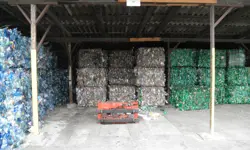
Recycling household waste
The percentage of waste recycled in the UK has risen rapidly over the past 20 years, thanks to breakthroughs in the way waste is processed. Find out about what happens to household waste and recent technological developments in the UK.

Upgrade existing buildings to reduce emissions
Much of the UK’s existing buildings predate modern energy standards. Patrick Bellew of Atelier Ten, a company that pioneered environmental innovations, suggests that a National Infrastructure Project is needed to tackle waste and inefficiency.
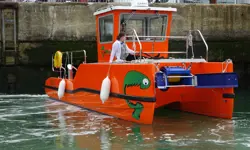
An appetite for oil
The Gobbler boat’s compact and lightweight dimensions coupled with complex oil-skimming technology provide a safer and more effective way of containing and cleaning up oil spills, both in harbour and at sea.
Other content from Ingenia
Quick read

- Environment & sustainability
- Opinion
A young engineer’s perspective on the good, the bad and the ugly of COP27

- Environment & sustainability
- Issue 95
How do we pay for net zero technologies?
Quick read

- Transport
- Mechanical
- How I got here
Electrifying trains and STEMAZING outreach

- Civil & structural
- Environment & sustainability
- Issue 95